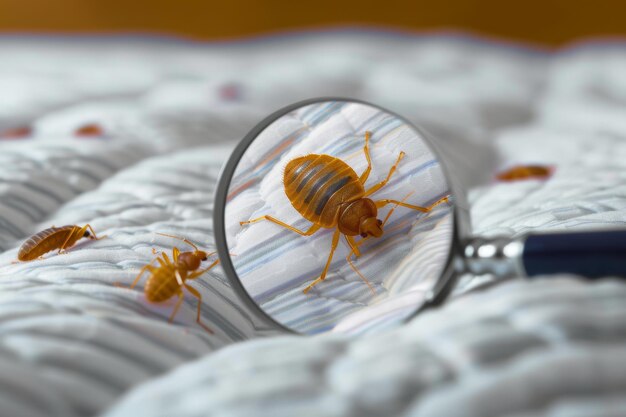The Future of Lyme Disease: Understanding the Journey and Outlook
Each year, as the lush landscapes across the globe awaken with the warmth of spring and summer, people are drawn outdoors to enjoy nature's bounty. However, amidst nature's splendor lies a hidden challenge: Lyme disease. This ailment, transmitted through the bite of an infected black-legged tick, raises a potent question in the minds of many—will Lyme disease ever truly go away? Let's dive into the complexities surrounding Lyme disease, explore its future, and uncover practical insights that can enhance your understanding of this pervasive issue.
Understanding Lyme Disease: A Quick Overview
What is Lyme Disease?
Lyme disease is an infectious disease caused by the bacterium Borrelia burgdorferi and is the most prevalent vector-borne illness in the United States and Europe. The disease was first recognized in 1975, and since then, its prevalence has surged, drawing concern from health professionals and the general public alike.
How is Lyme Disease Transmitted?
The primary vector for transmitting Lyme disease is the black-legged tick (commonly known as the deer tick). These ticks acquire the bacterium when they feed on infected animals, including mice and deer. Humans become incidental hosts when bitten by an infected tick. The risk of contracting the disease is highest in regions with dense tick populations.
Symptoms to Watch For
Symptoms of Lyme disease can vary from mild to severe, including:
- A rash at the bite site, often shaped like a bullseye
- Fever, chills, and joint pain
- Severe headaches and neck stiffness
- Neurological issues in advanced cases
Understanding these symptoms is crucial for early diagnosis and treatment.
The Persistence of Lyme Disease: Why It Sticks Around
Factors Contributing to the Resurgence
Environmental Changes: Climate change has expanded tick habitats. Warmer temperatures and milder winters allow ticks to survive in regions previously inhospitable to them.
Wildlife Patterns: Increasing deer and rodent populations, primary hosts for ticks, contribute to the proliferation of these pests. Urban development often disrupts natural predators of ticks and their host animals, compounding the problem.
Human Behavior: More people are engaging in outdoor activities, leading to greater exposure to ticks. Additionally, suburban expansion into wooded areas places more people in the natural habitats of ticks.
The Challenge of Diagnosis and Treatment
Diagnosing Lyme disease can be tricky. Its symptoms often mimic those of other ailments, leading to misdiagnosis. Timely treatment with antibiotics can prevent progression, but late-stage diagnosis complicates recovery. The medical community continues to search for more effective diagnostic tools and treatments.
Efforts to Combat Lyme Disease
Public Awareness and Education
Raising awareness about Lyme disease is vital. Public health organizations are increasing initiatives to educate people about prevention measures, tickbite identification, and early symptoms recognition.
Advances in Research and Medicine
Research into Lyme disease is progressing, focusing on better diagnostic tests, effective vaccines, and new treatments. Although a vaccine existed in the past, it was discontinued due to low demand and concerns over side effects. However, recent advances promise the possibility of new preventive measures becoming available.
Controlling Tick Populations
Efforts to control tick populations include environmental strategies such as reducing deer populations, developing tick-targeted pesticides, and encouraging landscaping techniques that deter ticks. These approaches aim to reduce the risk of human-tick encounters.
Looking Forward: Can Lyme Disease Go Away?
The Pessimistic Perspective
From one viewpoint, it seems unlikely that Lyme disease will entirely disappear. The combination of environmental changes, animal behaviors, and human activities presents ongoing challenges. Additionally, the ability of Borrelia burgdorferi to evade immune responses complicates potential eradication efforts.
The Optimistic Outlook
Conversely, advances in medical science, public awareness, and tick control strategies inspire hope. With increased education, preventive vaccination, and breakthroughs in treatment and diagnostics, the impact of Lyme disease can be mitigated considerably.
Coexisting with Lyme Disease
While eradication may be a distant goal, learning to live safely in areas where Lyme disease is prevalent is achievable. This involves practicing preventive measures, staying informed about advancements, and supporting ongoing research efforts.
Practical Tips for Reducing Lyme Disease Risk
Protective Clothing and Repellents: Wear long sleeves and pants during outdoor activities. Use tick repellents containing DEET or permethrin for added protection.
Tick Checks: Conduct thorough tick checks after spending time outdoors, ensuring areas like behind knees, underarms, and scalps are examined.
Landscaping Strategies: Maintain a tick-safe yard by trimming grass short, creating tick barriers with wood chips or gravel, and removing leaf litter.
Stay Informed: Keep up-to-date with the latest Lyme disease research and regional tick activity reports to make informed decisions about prevention.
Prompt Medical Attention: Seek medical advice if you suspect a tick bite or experience symptoms. Early diagnosis significantly improves treatment outcomes.
In conclusion, while Lyme disease may not simply vanish, we are not powerless against it. By understanding the factors contributing to its persistence, embracing advances in science and medicine, and adopting preventive strategies, we can reduce its impact and safeguard our health against this insidious ailment.
Quick Recap: Essential Tips on Lyme Disease 🌿🕷️
- Stay Informed: ➡️ Keep updated on Lyme disease research and tick activity.
- Prevention: 🧢 Wear protective clothing and use repellents outdoors.
- Regular Checks: 🔎 Perform tick checks after outdoor activities.
- Yard Safety: 🌱 Implement landscaping strategies to deter ticks.
- Medical Vigilance: 🏥 Seek prompt medical attention for symptoms or bite concerns.
